Seven Wonders of the World
Seven Wonders of the World
The Seven Wonders of the World are a group of places around the globe that are considered to be of great importance. These are: The Colosseum in Italy, Petra in Jordan, Chichén Itzá in Mexico, Christ the Redeemer in Brazil, Machu Picchu in Peru, Taj Mahal in India and The Great Wall of China.
What are the Seven Wonders of the World?
The original seven wonders, also referred to as the Seven Wonders of the Ancient World, were:
- The Great Pyramid of Giza, Egypt;
- The Hanging Gardens of Babylon;
- The Statue of Zeus at Olympia;
- The Temple of Artemis at Ephesus;
- The Mausoleum at Halicarnassus;
- The Colossus of Rhodes;
- The Lighthouse of Alexandria.
The Seven Wonders of the Ancient World were remarkable, humanly-constructed landmarks from ancient, classical civilisations. This original list dates from the second century BC.
How many of the original Seven Wonders still exist?
The Great Pyramid of Giza is the only ancient wonder that still exists today. The other six have either disappeared or are in ruin.
Why are there only Seven Wonders?
Even though there are a multitude of hugely impressive ancient sights, there have only ever been seven ancient wonders of the world. The ancient Greeks believed the number seven represented perfection, so it was a particularly significant number for them.
What are the new Seven Wonders?
In 2000, a campaign was started to decide on seven new world wonders. Over 100 million people cast their votes in order to whittle over 200 places down to just seven. Then, in 2017, the new modern list of the Seven Wonders of the World, featuring landmarks that are still in existence today, was finalised.
Let’s take a look at the modern list of the Seven Wonders of the World:
1. The Great Wall of China
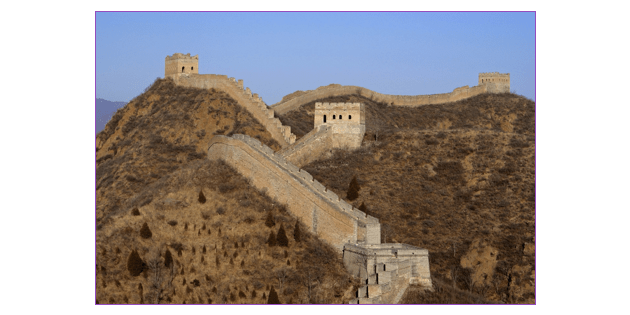 The Great Wall of China is the longest wall in the world! The Chinese national symbol was built by several dynasties (ruling families) over hundreds of years (nearly 1,800), starting in about 220 BC. The wall was built to defend areas from invasions and ha⁸d watchtowers built on the highest places. The famous landmark is actually made up of lots of overlapping walls that measure a combined length of up to 20,000 kilometres. Millions of people visit the Wonder every year.
The Great Wall of China is the longest wall in the world! The Chinese national symbol was built by several dynasties (ruling families) over hundreds of years (nearly 1,800), starting in about 220 BC. The wall was built to defend areas from invasions and ha⁸d watchtowers built on the highest places. The famous landmark is actually made up of lots of overlapping walls that measure a combined length of up to 20,000 kilometres. Millions of people visit the Wonder every year.
2. Taj Mahal, India
 This magnificent landmark took 16 years and 20,000 workers to build! It was commissioned to be built in 1632 by Emperor Shah Jahan with the purpose of housing the tomb of his wife, Mumtaz. Architecturally, the building represents symmetry and balance, and the colour of the exterior marble walls change depending on the time of day. In the morning sun, the white marble looks a shade of pink. During the evening, it looks the colour of milk and looks golden at night when lit by the moon. Because the Taj Mahal commemorates Shah Jahan’s love for Mumtaz, couples like to have their photographs taken with the building in the background.
This magnificent landmark took 16 years and 20,000 workers to build! It was commissioned to be built in 1632 by Emperor Shah Jahan with the purpose of housing the tomb of his wife, Mumtaz. Architecturally, the building represents symmetry and balance, and the colour of the exterior marble walls change depending on the time of day. In the morning sun, the white marble looks a shade of pink. During the evening, it looks the colour of milk and looks golden at night when lit by the moon. Because the Taj Mahal commemorates Shah Jahan’s love for Mumtaz, couples like to have their photographs taken with the building in the background.
3. Petra, Jordan
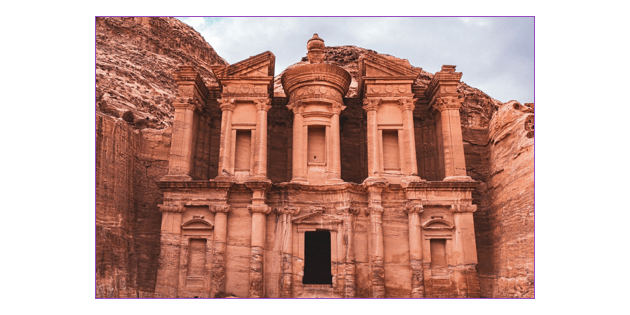 Petra is an ancient city carved into rock. It is thought that it was built over 2,000 years ago by a group of people who lived in the Wadi Musa valley, called the Nabateans. However, not much is known about the Nabateans. The city fell to the Roman Empire in AD 106 and an earthquake in AD 363 damaged the city, which resulted in it eventually falling into disuse. The city ruins were rediscovered in 1812 by a Swiss explorer called Johann Burckhardt.
Petra is an ancient city carved into rock. It is thought that it was built over 2,000 years ago by a group of people who lived in the Wadi Musa valley, called the Nabateans. However, not much is known about the Nabateans. The city fell to the Roman Empire in AD 106 and an earthquake in AD 363 damaged the city, which resulted in it eventually falling into disuse. The city ruins were rediscovered in 1812 by a Swiss explorer called Johann Burckhardt.
4. The Colosseum, Italy
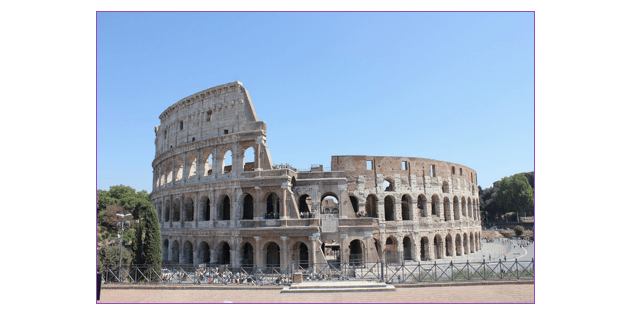 The Colosseum, also known as the Flavian Amphitheatre, was built between AD 70 and AD 80. It was used for gladiator fights, animal hunts and public executions for four centuries. The floor could also be flooded in order to stage sea battles! Following the fall of the Roman Empire, the architectural masterpiece was actually used as a housing complex. Then, in 1349, a great earthquake destroyed parts of the structure. Despite the damage done over the years, it remains an incredibly popular tourist attraction today.
The Colosseum, also known as the Flavian Amphitheatre, was built between AD 70 and AD 80. It was used for gladiator fights, animal hunts and public executions for four centuries. The floor could also be flooded in order to stage sea battles! Following the fall of the Roman Empire, the architectural masterpiece was actually used as a housing complex. Then, in 1349, a great earthquake destroyed parts of the structure. Despite the damage done over the years, it remains an incredibly popular tourist attraction today.
5. Christ the Redeemer, Brazil
 Christ the Redeemer is a statue located at the summit of Corcovado Mountain overlooking Rio de Janeiro in Brazil. The statue shows Jesus Christ with his arms spread out over the city. The statue is 30 metres tall, with an arm span of the statue is 28 metres!
Christ the Redeemer is a statue located at the summit of Corcovado Mountain overlooking Rio de Janeiro in Brazil. The statue shows Jesus Christ with his arms spread out over the city. The statue is 30 metres tall, with an arm span of the statue is 28 metres!
The structure is the newest wonder, having been completed in 1931. At the time of its construction, Brazil was a predominantly Catholic country, and images of the Christ statue were spread throughout.
6. Chichén Itzá, Mexico
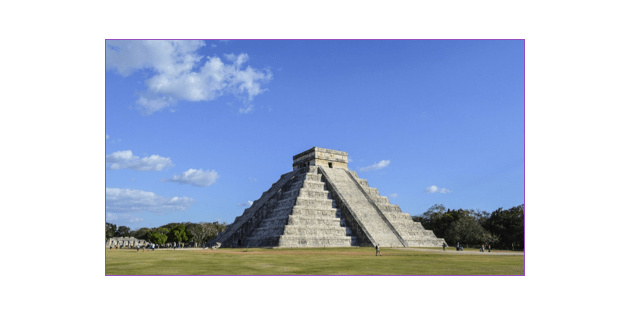 Chichén Itzá was a city built by The Maya people over 1,500 years ago. The city was an important political and economic centre for The Maya people. You’ll find the Temple of Kukulkán (named after the serpent deity), sometimes also referred to as El Castillo, there. It has 91 steps on each of its four sides. An extra step was added at the top of the temple to total 365 steps – one for each day of the year. The top of the temple features a carving of Kukulkán.
Chichén Itzá was a city built by The Maya people over 1,500 years ago. The city was an important political and economic centre for The Maya people. You’ll find the Temple of Kukulkán (named after the serpent deity), sometimes also referred to as El Castillo, there. It has 91 steps on each of its four sides. An extra step was added at the top of the temple to total 365 steps – one for each day of the year. The top of the temple features a carving of Kukulkán.
7. Machu Picchu, Peru
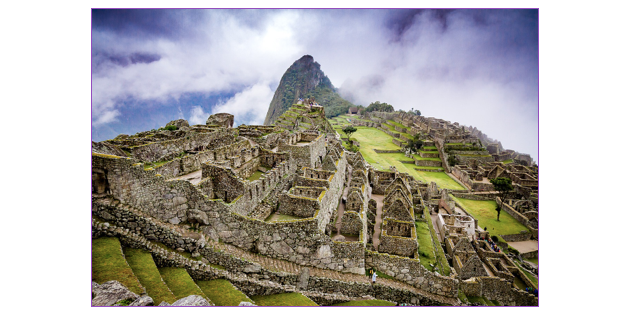 Machu Picchu is the ruins of a city from the Incan empire that was built in the 15th century. The ruins are in the Andes Mountains, over 2,000 metres above sea level. Its walls and other architectural elements are cut into the natural rock.
Machu Picchu is the ruins of a city from the Incan empire that was built in the 15th century. The ruins are in the Andes Mountains, over 2,000 metres above sea level. Its walls and other architectural elements are cut into the natural rock.
It’s not certain why the city was first built, although some sources suggest it was used as a royal retreat for the emperor, Pachacuti Inca Yupanqui. It is thought to have been used between the 15th and 16th centuries, but was gradually abandoned over time. Today, it is a very popular tourist site, so much so that the Peruvian government has begun limiting the amount of people able to visit each year to preserve it.
What are the ancient Seven Wonders of the World?
Let’s delve a little deeper into the history of the ancient wonders:
1. The Great Pyramid of Giza, Egypt
 The Great Pyramid of Giza was built around 2600 BC by the Egyptians and took 20 years to complete! It’s the largest of the three Giza pyramids and was constructed as a tomb for the Egyptian pharaoh named Khufu. The pyramid’s perfect symmetry and unparalleled height (146.5 metres) made it an extremely impressive sight that was visited by ancient tourists. Fun fact: it was the tallest human-made structure on earth for almost 4,000 years!
The Great Pyramid of Giza was built around 2600 BC by the Egyptians and took 20 years to complete! It’s the largest of the three Giza pyramids and was constructed as a tomb for the Egyptian pharaoh named Khufu. The pyramid’s perfect symmetry and unparalleled height (146.5 metres) made it an extremely impressive sight that was visited by ancient tourists. Fun fact: it was the tallest human-made structure on earth for almost 4,000 years!
2. The Hanging Gardens of Babylon
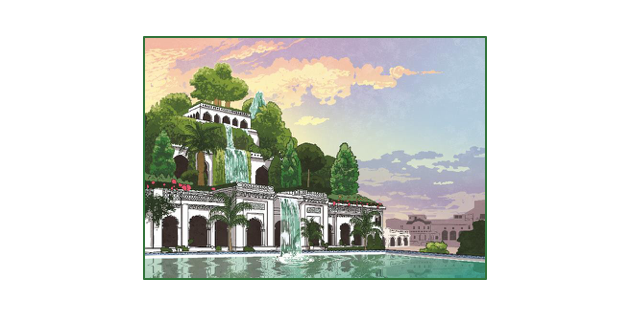 The Hanging Gardens of Babylon were built by King Nebuchadnezzar II as a gift for his wife, who missed the mountains and flowers of her homeland. They are believed to have been constructed around 600 BC in the ancient city of Babylon, which is now part of Iraq.
The Hanging Gardens of Babylon were built by King Nebuchadnezzar II as a gift for his wife, who missed the mountains and flowers of her homeland. They are believed to have been constructed around 600 BC in the ancient city of Babylon, which is now part of Iraq.
Babylon was a desert-like place, so creating a sanctuary of lush green trees, shrubs and vines is a quite extraordinary achievement! The gardens were apparently destroyed by earthquake in the first century AD.
It is possible, however, that these mysterious gardens were purely mythical and never actually existed, as no archaeological evidence of them has ever been discovered.
3. The Statue of Zeus at Olympia
 The Statue of Zeus stood at an enormous 12 metres high! It was built sometimes around 432 BC by a Greek sculptor named Phidas to honour the chief of the Greek gods. It was located within the Temple of Zeus in Olympia, which was also the site of the first Olympic Games. The statue showed Zeus seated on a resplendent throne, with ivory skin and golden robes. It was designed to inspire awe in worshippers and is considered to have been pagan, which would explain why the statue was removed after the rise of Christianity.
The Statue of Zeus stood at an enormous 12 metres high! It was built sometimes around 432 BC by a Greek sculptor named Phidas to honour the chief of the Greek gods. It was located within the Temple of Zeus in Olympia, which was also the site of the first Olympic Games. The statue showed Zeus seated on a resplendent throne, with ivory skin and golden robes. It was designed to inspire awe in worshippers and is considered to have been pagan, which would explain why the statue was removed after the rise of Christianity.
4. The Temple of Artemis at Ephesus
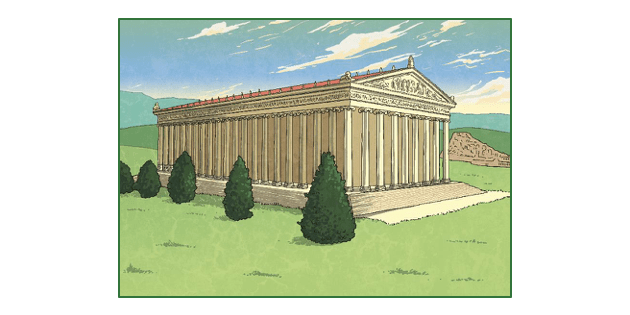 The Temple of Artemis was built in the Greek colony of Ephesus, which is now part of Turkey. It was built in 550 BC to honour Artemis, the goddess of hunting. The magnificent build took over 120 years to build and only one night to destroy! In 356 BC, it was tragically set ablaze by a man named Herostratus, who did it simply in hopes of becoming known for destroying such a beautiful creation.
The Temple of Artemis was built in the Greek colony of Ephesus, which is now part of Turkey. It was built in 550 BC to honour Artemis, the goddess of hunting. The magnificent build took over 120 years to build and only one night to destroy! In 356 BC, it was tragically set ablaze by a man named Herostratus, who did it simply in hopes of becoming known for destroying such a beautiful creation.
5. The Mausoleum at Halicarnassus
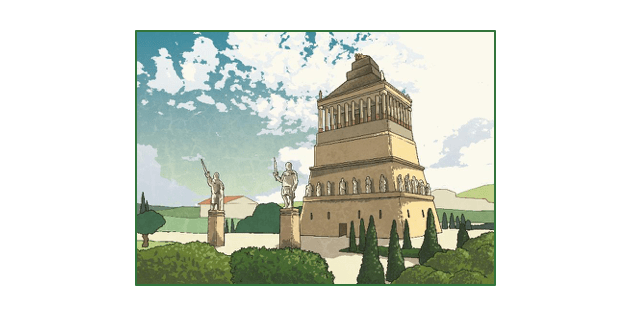 The Mausoleum at Halicarnassus was built between 353 and 350 BC near Bodrum in Turkey as a tomb for the Persian satrap (governor) Mausolus. Its construction was ordered by his wife, Artemisia II, who was so distraught at his death that she felt he deserved an extravagant tomb, worthy of a king.
The Mausoleum at Halicarnassus was built between 353 and 350 BC near Bodrum in Turkey as a tomb for the Persian satrap (governor) Mausolus. Its construction was ordered by his wife, Artemisia II, who was so distraught at his death that she felt he deserved an extravagant tomb, worthy of a king.
The impressive 41-metre-high structure combined Greek, Lycian and Egyptian architecture. No expense was spared; the mausoleum was filled with beautiful marble statues, temples, sculptures and friezes.
The Mausoleum was the second longest surviving ancient wonder, after the Great Pyramid of Giza. It was eventually destroyed by earthquakes between the 12th and 15th century AD.
6. The Colossus of Rhodes
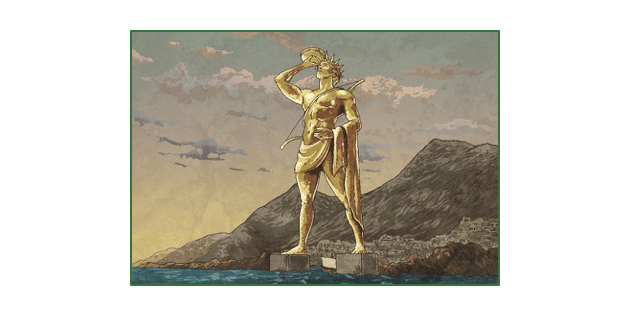 At 33 metres, the Colossus was the tallest statue in the ancient world – approximately the height of the modern Statue of Liberty. It was built by a Greek sculptor named Chares of Lindos, sometime between 292 and 280 BC.
At 33 metres, the Colossus was the tallest statue in the ancient world – approximately the height of the modern Statue of Liberty. It was built by a Greek sculptor named Chares of Lindos, sometime between 292 and 280 BC.
The statue was built to honour Helios, the Greek sun god, in celebration of the successful defence of the island after a year-long siege. Legend says that the people of Rhodes melted down abandoned bronze and iron weapons to help with its creation.
Unfortunately, the magnificent structure was destroyed by an earthquake in 226 BC and remained in pieces on the ground for hundreds of years.
7. The Lighthouse of Alexandria
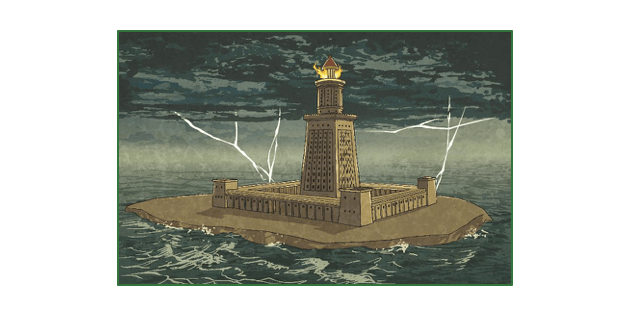 The Lighthouse at Alexandria, estimated to have been between 115 and 145 metres tall, would guide ships through the shallow, rocky waters of Alexandria’s harbour. It was constructed in 280 BC on the Island of Pharos, in Egypt.
The Lighthouse at Alexandria, estimated to have been between 115 and 145 metres tall, would guide ships through the shallow, rocky waters of Alexandria’s harbour. It was constructed in 280 BC on the Island of Pharos, in Egypt.
It used a mirror to reflect the sun's rays during the day and a fire at night. The light was supposedly visible over 30 miles away!
Unfortunately, much like the majority of the ancient wonders, the lighthouse was damaged by a number of earthquakes, before completely collapsing during the 15th century.



































